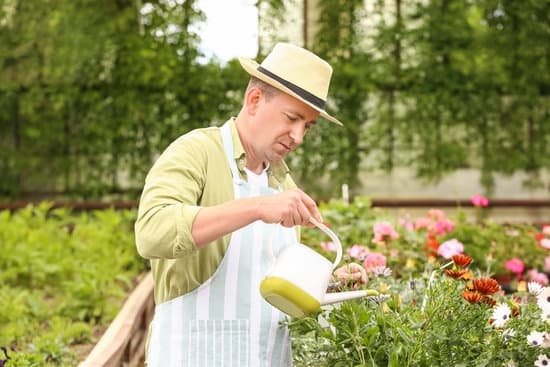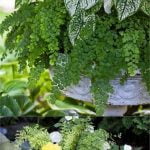Are you looking for ideas to start your own vegetable garden in your backyard? There are countless benefits to cultivating a vegetable garden right in your own outdoor space.
Not only does it provide easy access to fresh produce, but it also offers a cost-saving alternative to grocery shopping and the satisfaction of growing your own food. In this article, we will explore various aspects of starting a backyard vegetable garden, from finding the perfect location to choosing the right vegetables and designing the layout.
One of the first steps in starting a vegetable garden in your backyard is finding the perfect spot for it. Factors such as sunlight exposure, soil quality, and accessibility for watering and maintenance all play crucial roles in determining the success of your garden.
Additionally, it’s important to carefully consider which vegetables are best suited for your specific climate and growing conditions. By taking these factors into account, you can ensure a bountiful harvest while making the most out of your gardening efforts.
Once you have chosen the ideal location for your vegetable garden and selected the right vegetables for your area, it’s time to think about the design and layout. There are various options available, including raised beds, container gardening, and companion planting, each with its own set of advantages.
With proper soil preparation and maintenance tips, essential tools and supplies at hand, as well as a seasonal planting guide and troubleshooting solutions on standby, you’ll be well on your way to embracing the rewards of backyard vegetable gardening.
Location, Location, Location
When it comes to starting a vegetable garden in your backyard, one of the most crucial factors to consider is the location. The success of your garden largely depends on finding the perfect spot that provides adequate sunlight, good soil quality, and easy accessibility for watering and maintenance. Here are some ideas for finding the ideal location for your vegetable garden:
- Direct sunlight: Choose an area in your backyard that receives at least 6-8 hours of direct sunlight daily. Most vegetables require ample sunlight to thrive and produce a bountiful harvest.
- Soil quality: Test the soil in different parts of your backyard to determine its quality. Look for well-draining soil with good fertility and pH levels suitable for growing vegetables.
- Accessibility: Consider the proximity of the location to your water source, as well as how easily you can access it for regular watering, weeding, and harvesting.
Once you have identified a suitable location for your vegetable garden, you can start planning and preparing the area for planting. Keep in mind that certain vegetables may have specific requirements regarding sunlight and soil, so take those into consideration when deciding where to plant them within your chosen spot. By carefully selecting the right location for your vegetable garden, you can set yourself up for a successful and rewarding gardening experience.
Finally, don’t be afraid to get creative with the layout of your vegetable garden. Whether you opt for raised beds, container gardening, or companion planting, there are plenty of design options to maximize space and yield in your backyard. With these ideas in mind, you’ll be well on your way to enjoying a flourishing vegetable garden right outside your door.
Choosing the Right Vegetables for Your Garden
When starting a vegetable garden in your backyard, the key to success lies in choosing the right vegetables that are suitable for the climate and growing conditions in your area. Here are some ideas for vegetable gardens in backyards to help you select the best crops for your garden:
- Tomatoes: Tomatoes are versatile and can be grown in containers or directly in the ground. They require plenty of sunlight and well-drained soil.
- Carrots: Carrots thrive in loose, sandy soil and need regular watering. They can be planted directly into the ground or raised beds.
- Zucchini: Zucchini plants need ample space to spread out and plenty of sunlight. They are easy to grow and produce a generous harvest.
- Peppers: Peppers come in various sizes, shapes, and heat levels. They require full sun and well-drained soil, making them perfect for backyard gardens.
- Lettuce: Lettuce is a cool-season crop that can be grown in containers or raised beds. It thrives in partial shade and requires regular watering.
Consider the space available in your backyard, as well as your preferences when selecting vegetables for your garden. Additionally, take into account the time it takes for each vegetable to mature and whether they fit within your gardening schedule.
When planning your vegetable garden, don’t forget to consider companion planting. Some vegetables thrive when planted alongside others, while others may inhibit each other’s growth. Doing some research on this topic will help you maximize the yield of your backyard garden.
Garden Design and Layout Ideas
When planning your vegetable garden layout, there are several design options to consider that can help maximize space and yield. One popular option is raised beds, which provide better drainage and soil quality compared to traditional in-ground planting. Raised beds also make it easier to maintain and harvest your crops without constantly bending over.
Container gardening is another great idea for vegetable gardens in the backyard, especially for those with limited space. You can grow a variety of vegetables in containers, such as tomatoes, peppers, and herbs, and move them around to optimize sunlight exposure.
Companion planting is also an effective way to utilize space efficiently by grouping mutually beneficial plants together. For example, planting garlic alongside tomatoes can help repel pests that may damage the tomatoes. Additionally, planting lettuce under taller plants like corn can provide shade and keep the soil moist.
Incorporating vertical gardening techniques, such as trellises or cages for vining plants like cucumbers and beans, can further optimize space in your backyard vegetable garden. Using trellises not only saves ground space but also helps prevent diseases by improving air circulation around the plants.
Overall, choosing the right garden design and layout ideas for your backyard will not only enhance the aesthetics of your outdoor space but also ensure a bountiful harvest of fresh vegetables throughout the season.
| Garden Design Options | Description |
|---|---|
| Raised Beds | Provides better drainage and soil quality; easier maintenance and harvesting |
| Container Gardening | Ideal for limited spaces; allows mobility for sunlight optimization |
| Companion Planting | Grouping mutually beneficial plants together; efficient utilization of space |
| Vertical Gardening | Trellises or cages for vining plants; saves ground space and improves air circulation |
Soil Preparation and Maintenance Tips
Testing and Amending Soil
Before starting your backyard vegetable garden, it’s essential to test the soil to determine its pH level and nutrient content. You can do this by purchasing a DIY soil testing kit or sending a sample to a local agricultural extension office. Once you have the results, you can amend the soil as needed by adding organic matter like compost, manure, or peat moss to improve its structure and fertility.
Mulching for Moisture Retention
To conserve moisture in your garden and suppress weed growth, consider using mulch. Organic materials like straw, wood chips, or shredded leaves can be spread over the soil surface between plants. This not only helps retain moisture but also adds nutrients to the soil as it breaks down over time.
Pest Management Without Chemicals
One of the advantages of having a vegetable garden in your backyard is being able to control pest management without relying on harmful chemicals. There are various natural methods for keeping pests at bay, such as companion planting (where certain plants deter pests from others), using physical barriers like row covers or netting, and attracting beneficial insects like ladybugs and lacewings.
By following these soil preparation and maintenance tips, you’ll be well on your way to cultivating a thriving backyard vegetable garden that yields an abundant harvest of fresh produce throughout the growing season.
Essential Tools and Supplies for Your Vegetable Garden
Starting a vegetable garden in your backyard is an exciting and fulfilling endeavor. To ensure the success of your garden, it’s important to have the essential tools and supplies on hand. Having the right equipment not only makes gardening more efficient but also contributes to healthier and more abundant crops. Here are some must-have items for your backyard vegetable garden.
First and foremost, you will need a set of high-quality gardening tools. This includes a durable shovel for digging and turning over soil, a garden fork for aerating the soil, a hand trowel for planting and transplanting, and a sturdy rake for leveling the ground and removing debris. Additionally, investing in a pair of good quality gardening gloves will protect your hands from blisters, thorns, and rough plant surfaces.
Another essential supply for your vegetable garden is a reliable watering can or hose with an adjustable nozzle. Proper hydration is crucial for the health and growth of your plants, so having an efficient watering system is key. You may also consider installing a simple drip irrigation system if you have a larger garden space.
In addition to these tools, organic fertilizers such as compost and mulch are vital for maintaining healthy soil and providing essential nutrients to your vegetables. Compost bins or tumblers are great for creating nutrient-rich compost from kitchen scraps and yard waste. Mulching materials like straw, wood chips, or grass clippings help retain moisture in the soil while suppressing weeds.
Lastly, it’s important to have appropriate containers or seed starting trays if you plan on starting seeds indoors before transplanting them into your garden. Good quality potting mix designed for vegetable plants will provide the right environment for successful seed germination.
| Tools | Supplies |
|---|---|
| Shovel | Organic Fertilizers |
| Garden Fork | Compost bin/tumbler |
| Hand Trowel | Mulching materials |
Seasonal Planting and Harvesting Guide
Having a seasonal planting and harvesting guide is essential for a successful vegetable garden in your backyard. By understanding the best timing for planting and harvesting different vegetables, you can maximize the yield of your garden and enjoy a continuous supply of fresh produce throughout the year. Here are some ideas for vegetables to consider for each season in your backyard garden.
In the spring, consider planting cool-season vegetables such as lettuce, spinach, carrots, radishes, and peas. These vegetables thrive in the cooler temperatures of early spring and can be harvested before the heat of summer sets in. Additionally, it is also a good time to start warm-season crops like tomatoes, peppers, cucumbers, and squash indoors to transplant them into the garden after the last frost date.
As temperatures rise in the summer, focus on maintaining your existing crops while also considering heat-tolerant vegetables like beans, okra, eggplant, and sweet potatoes for planting. It’s also important to continue harvesting any remaining cool-season crops before they bolt or become bitter due to the heat.
When fall arrives, plan to extend your growing season by planting cold-hardy vegetables such as broccoli, cauliflower, Brussels sprouts, kale, and cabbage. These crops can withstand light frost and will continue to produce well into late fall or even early winter in some regions.
Finally, as winter sets in or during any mild winter spells in your area, you can still grow certain vegetables such as garlic, onions, winter greens like chard and kale by planning ahead with their planting schedule.
By following a seasonal planting and harvesting guide for your backyard vegetable garden, you can ensure that you have an abundance of fresh produce year-round while also making the most of your gardening space. Whether you have raised beds or container gardens, understanding these seasonal guidelines will help you make the most out of your backyard vegetable garden.
Troubleshooting Common Garden Problems
Identifying and Managing Pests
One of the most common problems that vegetable gardeners encounter in their backyard plots is pests. Whether it’s aphids on your lettuce or tomato hornworms on your tomatoes, dealing with pests can be frustrating. However, there are several eco-friendly ways to manage these unwanted visitors. Consider using natural predators like ladybugs and praying mantises to control aphids and other small bugs. Additionally, you can make homemade insecticidal soaps from common household ingredients to deter larger pests and caterpillars.
Preventing and Addressing Diseases
Another challenge that backyard gardeners may face is plant diseases, such as powdery mildew, blight, or root rot. To prevent these issues, it’s important to practice good garden hygiene by removing dead or diseased plant material and providing adequate air circulation between plants.
Using disease-resistant varieties of vegetables can also help minimize the risk of infections. If diseases do appear in your garden, there are organic fungicides and treatments available to help combat them without resorting to harsh chemicals.
Weather-Related Challenges
Extreme weather conditions can also impact a vegetable garden in the backyard. From droughts to heavy rains and temperature fluctuations, unpredictable weather patterns can stress plants and affect their growth. Consider using mulch to regulate soil moisture levels and protect roots from temperature extremes.
For particularly hot or cold spells, temporary protective covers like row covers or shade cloth can shield plants from damage. It’s important to monitor weather forecasts regularly so that you can take preemptive measures when necessary.
By understanding how to identify and address these common garden problems, backyard vegetable gardeners can overcome challenges and achieve successful harvests from their homegrown produce. With proper care and attention, you can enjoy a bountiful supply of fresh vegetables right from your own backyard.
Conclusion
In conclusion, starting a vegetable garden in your backyard can be a rewarding and fulfilling experience. Not only does it provide easy access to fresh and nutritious produce, but it also offers the satisfaction of growing your own food.
Additionally, backyard vegetable gardening can be a cost-saving endeavor, allowing you to reduce your grocery expenses while enjoying the fruits of your labor. By embracing the idea of a backyard vegetable garden, you are taking proactive steps towards sustainable living and self-sufficiency.
Furthermore, finding the perfect spot for your vegetable garden is crucial to its success. Considering factors such as sunlight, soil quality, and accessibility for watering and maintenance can ensure optimal conditions for plant growth. Additionally, choosing the right vegetables for your garden based on climate and growing conditions in your area is essential. By taking these important considerations into account, you can set yourself up for a thriving and bountiful vegetable garden.
As you embark on creating your own backyard vegetable garden, consider various design options such as raised beds, container gardening, or companion planting to maximize space and yield. Furthermore, preparing and maintaining the soil with composting, mulching, and pest management is vital for optimal vegetable growth.
Equipping yourself with essential tools and supplies will also contribute to the success of your backyard vegetable garden. Finally, by embracing the rewards of backyard vegetable gardening and proactively addressing common issues that may arise, you can fully enjoy the benefits of this enriching and sustainable practice.
Frequently Asked Questions
What Is a Good Layout for a Vegetable Garden?
A good layout for a vegetable garden involves proper planning and organization. Consider the size of the plants when fully grown, their sunlight and water requirements, and any companion planting strategies to maximize space and productivity.
What Can I Grow in My Backyard Vegetable Garden?
In your backyard vegetable garden, you can grow a variety of fruits, vegetables, and herbs depending on your climate and soil conditions. Some popular options include tomatoes, peppers, cucumbers, lettuce, carrots, onions, strawberries, and herbs like basil and mint.
How Can I Make My Vegetable Garden Look Pretty?
To make your vegetable garden look pretty, consider adding decorative elements such as trellises for climbing plants, colorful plant markers, and attractive containers for smaller herbs or flowers. Utilize natural materials like mulch or gravel pathways to add visual interest while also serving practical purposes in the garden.

Welcome to my gardening blog! I am passionate about plants and enjoy sharing my knowledge and experiences with others. In this blog, I will write about everything related to gardening, from tips on how to get started to updates on my own garden projects.





